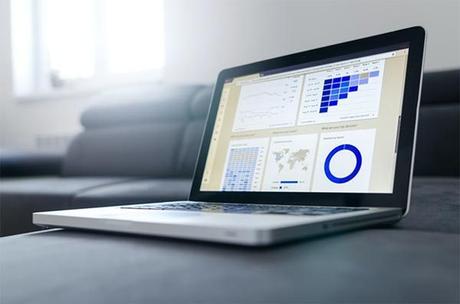Any effective business plan will include a forecast of likely future demand. This doesn’t mean someone has stared into a crystal ball, though often in the past, they might have. Rather it relates to using the best information available to make informed decisions about future scenarios.
Predictive analytics
Predictive analytics is the go-to tool for looking at future demand trends. Whilst it might sound frightening, and the software and algorithms that underpin it are complex, the concept is simple. Predictive analytics uses artificial intelligence to mine data, analyze statistics and produce a forecast of future trends.
The question for B2B businesses
The million dollar question is, how do we predict how many of those seeing our marketing materials today will become buyers of our services/products tomorrow? Having the ability to predict that answer might help to explain why predictive analytics features highly on the agendas of major sales events, irrespective of the fact that many senior sales personnel lack any real understanding of what predictive analytics can do for their sales profile. Nevertheless, there is a growing appreciation that it can provide an answer to questions such as:
- How many sales are we likely to make this period?
- What sales and marketing strategies are most likely to be successful.
- What is the best method to obtain closure with individual B2B companies
Maximising the return on investment is a major goal of any business and using predictive sales to inform the sales team of the best way to turn prospective clients into buyers is a tool that surely every business would want to utilise.
Predictive forecasting

Predictive forecasting works on the basis of an in-depth analysis of past sales performance set against what is happening currently with possible pending sales, breaking down each aspect of the journey the customer is undergoing. The application of algorithms results in a prediction of what is likely to happen with each potential sale, at individual sales representative level if required. The information produced informs the sales team which prospective customers they should first focus their attention on.
A unified approach to customer relationship management, marketing and sales
In order for predictive analytics to deliver the greatest results, marketing and sales teams must not work in their own silos; they need to develop a unified approach. The base information used in analysis comes from sales marketing campaigns; the more information can be gathered, the more accurate the forecasting is likely to be. Moreover, marketing teams come to better understand the challenges they face and are able to take steps to overcome them and increase the possibility of prospects moving through the sales funnel. Analytical tools will help them to achieve this because they provide an insight into how effective marketing strategies are and how they might be improved. When the result of this can be seen, data on sales and the sales funnel can be utilised by sales staff to ensure the focus is where it needs to be and likely prospects do not fall through the net.
Predictive Lead Scoring
Predictive lead scoring is the name given to techniques used to determine which leads are likely to generate sales. Leads are given scores based on their profiles and past behaviours as generated by the algorithms which analyze data relating to past customer experience, and predict what is likely to occur as a prospect goes through their latest customer journey, how they are likely to behave, and how quickly they will aim to secure a deal. Maximising the potential of lead scoring can be achieved by operating a holistic marketing, customer relations and sales strategy.
Monitoring sales performance
Of course, it is not enough to simply allow predictive analysis to run in your operation. You need tangible evidence of its efficacy. You will want to be able to quantify the difference it is marking to your marketing strategy as it becomes increasingly effective and better integrated with customer relationship management and sales. Similarly, you need to see clearly what is happening in the sales arena. Predictive analysis will provide data on sales generally across the company and at individual sales representative level. Using this data in an intelligent way will enable you to see where there are shortcomings that need to be addressed and will point at where additional coaching and mentoring may be required.
A final word
The potential benefits of using predictive analysis to increase sales in B2B operations are legion. Yes, at first it might appear somewhat arcane, particularly to an enthusiastic and focused non-techy sales team but essentially, it is about using all the information that comes into the company about marketing and sales to hone the operation, get better and increase sales. It really is time to dump the sales director’s crystal ball in the nearest skip.
This article was written by Seamus Dunne of Conversation Piece. Seamus has experience working in b2b sales as he has set-up and developed his business to become a leading supplier of Cloud PBX Phone Systems in the Irish market.
